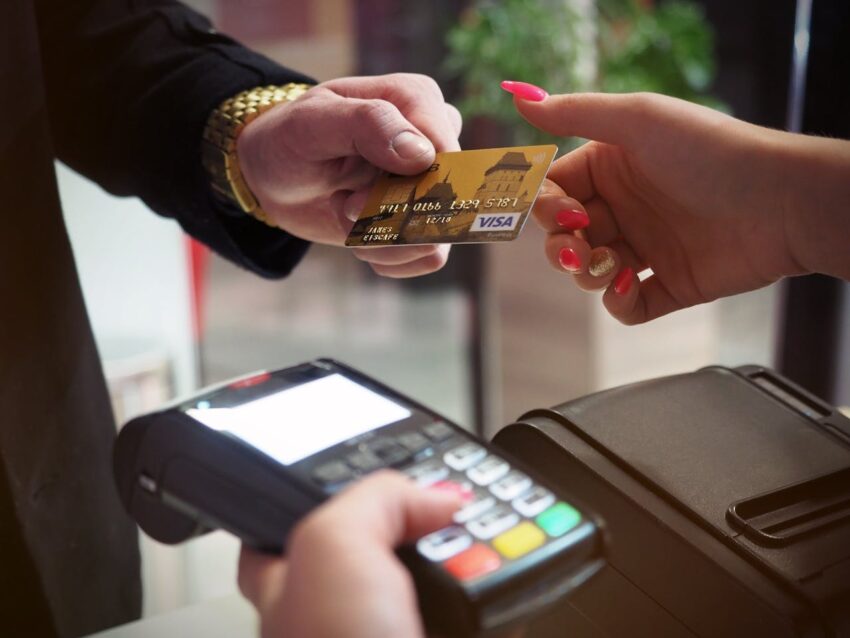Impulse buying can be a drain on your finances, leaving you wondering where all your hard-earned money went. Whether it’s the allure of a flash sale or the temptation of a late-night online shopping spree, these unplanned purchases can quickly add up. But don’t worry! If you’re wondering how to stop impulse buying, there are surprisingly effective tips that can help you regain control and curb these impulsive spending habits.
How to Stop Impulse Buying by Understanding the Why Behind It
Impulse buying – we’ve all been there. The sudden urge to splurge on something we don’t really need, only to later wonder what on earth possessed us. It’s important to understand the why behind your actions to effectively address and improve them in the future.
A lot of it comes down to that dopamine rush we get when we make a purchase. Retailers are masters at identifying emotional spending triggers, tapping into our desire for instant gratification. From clever marketing tactics to strategic product placement, they know how to push our buttons and make us reach for our wallets.
But it’s not all bad news. By understanding the reasons behind our impulse purchases, we can actually regain control. Whether it’s retail therapy to lift our spirits or a compulsive urge to shop, we often turn to shopping as a way to boost our mood. Whatever the root cause, being mindful of these impulses and having a plan in place can go a long way in how to stop impulse buying.
At the end of the day, impulse buying is a very human thing. You need to find a healthy balance – indulge in moderation, but don’t let it become a crutch. With a little self-awareness and some savvy shopping strategies, we can learn to appreciate the thrill of a good deal. Without the guilt of overspending. So the next time you feel that itch to splurge, take a deep breath, and ask yourself – is this really worth it?
Create a Spending Plan (Not Just a Budget)
I know the idea of meticulously tracking every single dollar you spend doesn’t exactly sound thrilling. But hear me out – what if I told you there’s a better way to manage your money?
Instead of a restrictive budget, how about creating a spending plan? The difference is that a spending plan is all about being intentional with your money, not depriving yourself. It’s about allocating funds for the things you enjoy, while still being responsible.
One of the biggest benefits of a spending plan is that it gives you permission to spend guilt-free on the stuff you love. Rather than trying to eliminate all discretionary spending, you can set aside a specific amount each month for entertainment, hobbies, or other “fun money” to spend any way you want. That way, you can indulge in the occasional impulse buy or planned splurge without blowing your budget.
Start by listing out your necessary monthly expenses, then allocate percentages or dollar amounts for discretionary spending. Tools like the Envelope Method can also be really helpful for visualizing and sticking to your plan.
With a little intention and a spending plan tailored to your lifestyle, you can take control of your finances and still enjoy the things that matter most to you.

The 24-Hour and 30-Day Rules for Smarter Spending
Whenever you’re considering a big purchase, it’s important to avoid the impulse to just buy it right away. That’s where the 24-Hour or 30-Day Rule comes in handy.
The idea behind this rule is simple – whenever you’re thinking about making a significant purchase, whether it’s a new piece of tech, a fancy appliance, or even a vacation, you force yourself to wait a set period of time before actually going through with it.
For smaller purchases, the 24-Hour Rule is a good guideline. If you see something you really want, give yourself a full 24 hours to think it over before pulling the trigger. This helps you avoid those impulsive buys that you later regret. Try putting it in your online shopping cart and coming back after 24 hours.
For bigger ticket items, I recommend trying the 30-Day Rule. When you find something, you’re tempted to buy, wait a full 30 days before deciding. This extended “cool off” period gives your excitement and desire time to wear off, so you can make a more rational, well-thought-out decision.
The 30-Day Rule is especially helpful for fighting buyer’s remorse. It’s so easy to get caught up in the moment and make a purchase you later realize you can’t really afford or don’t truly need. Forcing yourself to wait a month gives your rational brain time to catch up.
Unsubscribe from Marketing Emails
It’s amazing how effective promotional offers are in tempting us to make impulse purchases we don’t really need. These tactics play on our fear of missing out and the thrill of getting a good deal. However, by recognizing these triggers, we can make more mindful decisions and avoid unnecessary spending.
I decided to take the time to go through my inbox and ruthlessly unsubscribe from any mailing lists I don’t need. I’ve been able to reduce a major source of shopping temptation in my life. No more getting sucked in by the latest “can’t miss” deal or feeling the need to check my email every five minutes in case I’m missing out.
Decluttering my digital space has made a surprisingly big difference in my mindset. It’s a small step towards digital minimalism, but an important one.
Find Happiness Beyond Material Possessions
The temptation to buy, buy, buy is real. But you know what they say – money can’t buy happiness.
One of the best things you can do is to live with less. Adopt a minimalist lifestyle and clear out the clutter. When you have less stuff surrounding you, it’s easier to resist the urge to keep accumulating.
The bottom line is, be intentional about what you bring into your life. Focus on experiences that will truly enrich you, not just stuff that will end up collecting dust.

Find Healthier Alternatives to Stop Impulse Buying (i.e. Retail Therapy)
Retail therapy is a common way for people to try and lift their mood or reward themselves. But honestly – in the end, impulse buys often leave us feeling guilty and broke rather than fulfilled. If you want to learn how to stop impulse buying you must find healthier alternatives to retail therapy.
Instead of turning to shopping as a quick fix, try exploring new hobbies or activities that don’t cost a ton of money. Things like reading, journaling, taking a walk, or trying a new recipe can be just as rewarding without the buyer’s remorse. And don’t forget about simple self-care as an alternative- a relaxing bath, face mask, or just some quiet time can work wonders.
If you’re really itching to “treat yourself,” get creative with low-cost or free options. Make a fancy coffee at home, download a new playlist, or plan a picnic in the park. The plan is just to find ways to reward yourself that don’t rely on material possessions.
Remember, true fulfillment comes from within, not from the latest purchase. With a little mindfulness and some new habits, you can break the cycle of retail therapy and find healthier ways to lift your spirits.
Final Thoughts: How to Stop Impulse Buying
Learning how to stop impulse buying can be a difficult journey and a difficult habit to break. But by applying these tips, you’ll be able to break the cycle and learn how to stop impulse buying and take back your finances. The goal is to find a balanced approach that works for your unique situation. Remember, the most rewarding purchases come from intentional, thoughtful spending – not fleeting impulses. With a little discipline and a lot of self-awareness, you can start saving more and spending wisely.








2 thoughts on “How to Stop Impulse Buying: Surprisingly Effective Tips”
Comments are closed.